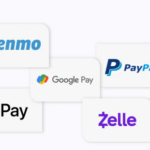What Is Ethereum Coin (ETH)
Ethereum Coin is a decentralized open-source blockchain system that features its own cryptocurrency, Ether. ETH works as a platform for numerous other cryptocurrencies, as well as for the execution of decentralized smart contracts. Ethereum was first described in a 2013 whitepaper by Vitalik Buterin. Buterin, along with other co-founders, secured funding for the project in an online public crowd sale
- What Is Ethereum Coin (ETH)
- Important Points Table Of Ethereum Coin
- How to Buy the Ethereum (ETH) Coin & Trade On Exchange?
- What Is Features OF Ethereum Coin ?
- Banking for everyone
- A more private internet
- A peer-to-peer network
- Censorship-resistant
- Commerce guarantees
- Compatibility for the win
- How Is the Ethereum Network Secured?
- Where Can You Buy Ethereum (ETH)?
The summer of 2014 and officially launched the blockchain on July 30, 2015. Ethereum’s own purported goal is to become a global platform for decentralized applications, allowing users from all over the world to write and run software that is resistant to censorship, downtime and fraud.
Important Points Table Of Ethereum Coin
| Basic | Points |
|---|---|
| Coin Name | Ethereum Coin |
| Short Name | ETH |
| Max Supply | 113,867,732 ETH |
| Explorer | Click Here To View |
| Technical Documentation | View Document |
| Website | Click Here To Visit |
How to Buy the Ethereum (ETH) Coin & Trade On Exchange?
What Is Features OF Ethereum Coin ?
Banking for everyone
Not everyone has access to financial services. But all you need to access and its lending, borrowing, and savings products is an internet connection.
A more private internet
You don’t need to provide all your personal details to use an Ethereum app. The is building an economy based on value, not surveillance.
A peer-to-peer network
Ethereum allows you to move money, or make agreements, directly with someone else. You don’t need to go through intermediary companies.
Censorship-resistant
No government or company has control over it. This decentralization makes it nearly impossible for anyone to stop you from receiving payments or using services on Ethereum.
Commerce guarantees
Ethereum creates a more level playing field. Customers have a secure, built-in guarantee that funds will only change hands if you provide what was agreed. You don’t need large company clout to do business.
Compatibility for the win
Better products and experiences are being built all the time because Ethereum products are compatible by default. Companies can build on each other’s success.
How Is the Ethereum Network Secured?
As of August 2020, They is secured via the Ethash proof-of-work algorithm, belonging to the Keccak family of hash functions. There are plans, however, to transition the network to a proof-of-stake algorithm tied to the major Ethereum 2.0 update, which launched in late 2020.
After the Ethereum 2.0 Beacon Chain (Phase 0) went live in the beginning of December 2020, it became possible to begin staking on the Ethereum 2.0 network. A stake is when you deposit ETH (acting as a validator) on 2.0 by sending it to a deposit contract, basically acting as a miner and thus securing the network. At the time of writing in mid-December 2020, the stake price, or the amount of money earned daily by validators, is about 0.00403 ETH a day, or $2.36. This number will change as the network develops and the amount of stakers (validators) increase.
The staking rewards are determined by a distribution curve (the participation and average percent of stakers): some ETH 2.0 staking rewards are at 20% for early stakers, but will be lowered to end up between 7% and 4.5% annually. The minimum requirements for a stake are 32 ETH. If you decide to stake in 2.0, it means that your stake will be locked up on the network for months, if not years, in the future until the 2.0 upgrade is completed.
Where Can You Buy Ethereum (ETH)?
Given the fact that is the second-largest cryptocurrency after Bitcoin, ETH trading pairs are listed on nearly all of the major crypto exchanges. Some of the largest markets include:
- Binance
- Coinbase Pro
- OKEx
- Kraken
- Huobi Global








